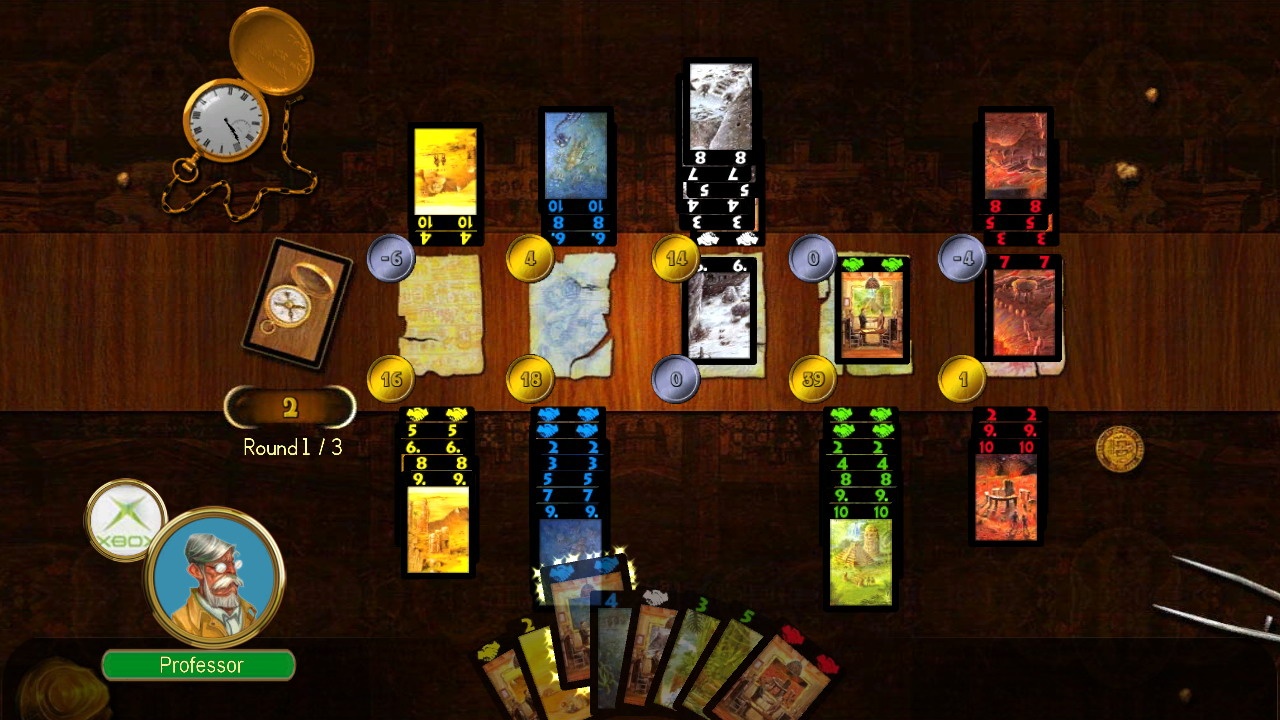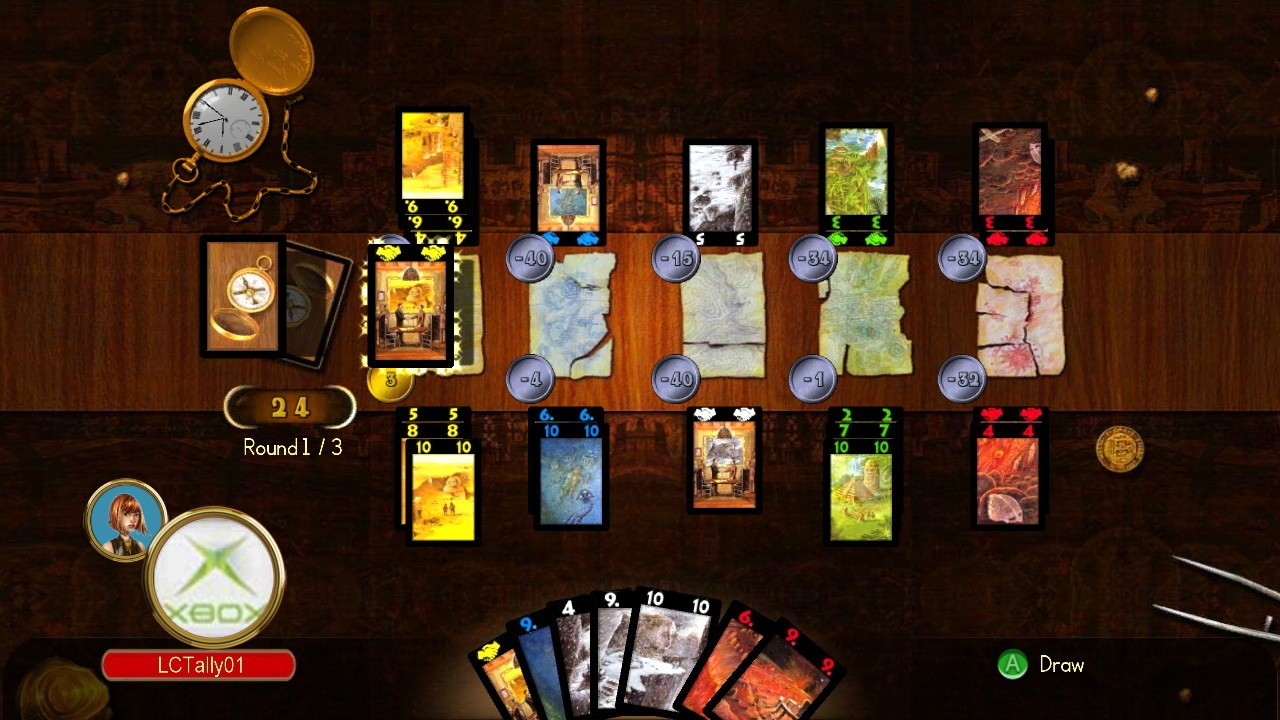If you don't want to surrender every waking moment to a game, do yourself a favor and avoid anything crafted by Reiner Knizia. Board and card games designed by the British-based mathematician are legendary for their simple yet addictive nature. For proof, check out Lost Cities, a two-to-four-player card game that has arrived on Xbox Live in all its compulsive, just-one-more-game glory.
Gameplay mechanics are straightforward and slightly reminiscent of rummy and solitaire. The object of the game is to build card suits in five different colors that depict archaeological jaunts to, well, lost cities tucked away in hidden corners all over the globe. Each suit in the 60-card deck is represented by numbered cards that run from 2 to 10, along with three investment cards per color that serve as scoring multipliers. You have to play the numbered cards in ascending order in their respective suits in a fashion similar to solitaire (for instance, you must play an eight on top of a seven), so the basics of play are easy to grasp. Depth comes from the multiplier cards, which need to be laid down first in order to have an effect on the eventual score earned by the numbered cards. Put one multiplier down and you raise your score by a factor of two, put down two and your score goes up by a factor of three, and put down all three and your score leaps by a whopping factor of four.

But you can't just throw cards down like crazy, because funding an expedition every time you start a card run loses you points. Start with a numbered card and your expedition begins at a relatively easy-to-make-up -20 minus the number value on the card you just played. Kick things off with a red two, for example, and you begin a red run of cards at -18 on the scoreboard. Start with a blue five and you begin a blue run of cards at -15. You're sent even deeper into the hole for every multiplier you play. One sets you back to -40, two to -60, and three to -80. So you've got to be careful that you only commit to card runs that you can really build up before the deck runs out and the round ends. Otherwise you end up losing big points.
Further complicating things, you can hold a maximum of eight cards at any time, meaning you'll have to discard extras to color-specific piles. You often have to gamble that you're going to draw enough colored cards to make it worthwhile to play an investment card or two, and watch that you don't wind up forced to discard cards that your opponent can use to construct big point runs. Simply dumping unneeded investment cards, for example, can murder you, as your rival is usually more than happy to scoop them up and then play them against you.
Gameplay mechanics like these make Lost Cities a tricky balance between risk and reward. Hard choices have to be made all the time, making the game spectacularly addictive and tense. You're constantly hit with tough judgment calls on what to play, mostly when it comes to deciding when to commit to playing a good run of numbered cards in your hand and when to hold off in the hopes of landing an expedition card or two that will crank up their point value. Cards have to be played at precisely the right time to maximize their point values. Jump too soon and you'll waste the expedition cards that will inevitably wind up being dealt to you later. Wait too long and you'll likely get stuck with a bunch of tiny card runs at the end of the round, some with expedition cards attached that might leave you 50 or 60 points below zero when all is said and done.

AI opponents are sharp enough to push you into negative numbers, too, especially when you play on the tougher difficulty settings. On hard, the game becomes a serious challenge for even a Lost Cities expert. There isn't much difference between playing the AI on hard and taking on a good human opponent in a multiplayer match over Live. The AI is quick to scoop up useful cards that you've ditched, and will regularly turn your trash into treasure courtesy of building lengthy expedition runs that count up lots of points. Even worse, the AI monitors what you're playing and will actively keep cards away from you. Lay down a couple of blue investment cards, for example, and the computer will try to hold on to its blue numbered cards until they're of no use to you. The AI will even go so far as to play keepaway and pick up your discards if it determines that you're tossing a card out for a turn or two to free up space in your hand (which is necessary on occasion).
Just a few minor drawbacks afflict what's arguably one of the best casual games to hit Xbox Live since its inception. As with most Knizia games, the theme is tacked on, so you can forget about it five minutes in unless you take a shine to the Indiana Jones-ish background graphics. Those visuals are oddly compressed, too. The cards aren't easy to read, even on a large HDTV, and the picture of an archaeological expedition in action displayed on each one is so tiny that you can't really make out any specifics. There aren't a lot of people playing online right now, either in the standard one-versus-one game or in the two-versus-two mode where you team up with another player. This may be due to the 800-point price tag scaring people off, but regardless of cost, casual games rarely get more addictive or enjoyable than this.